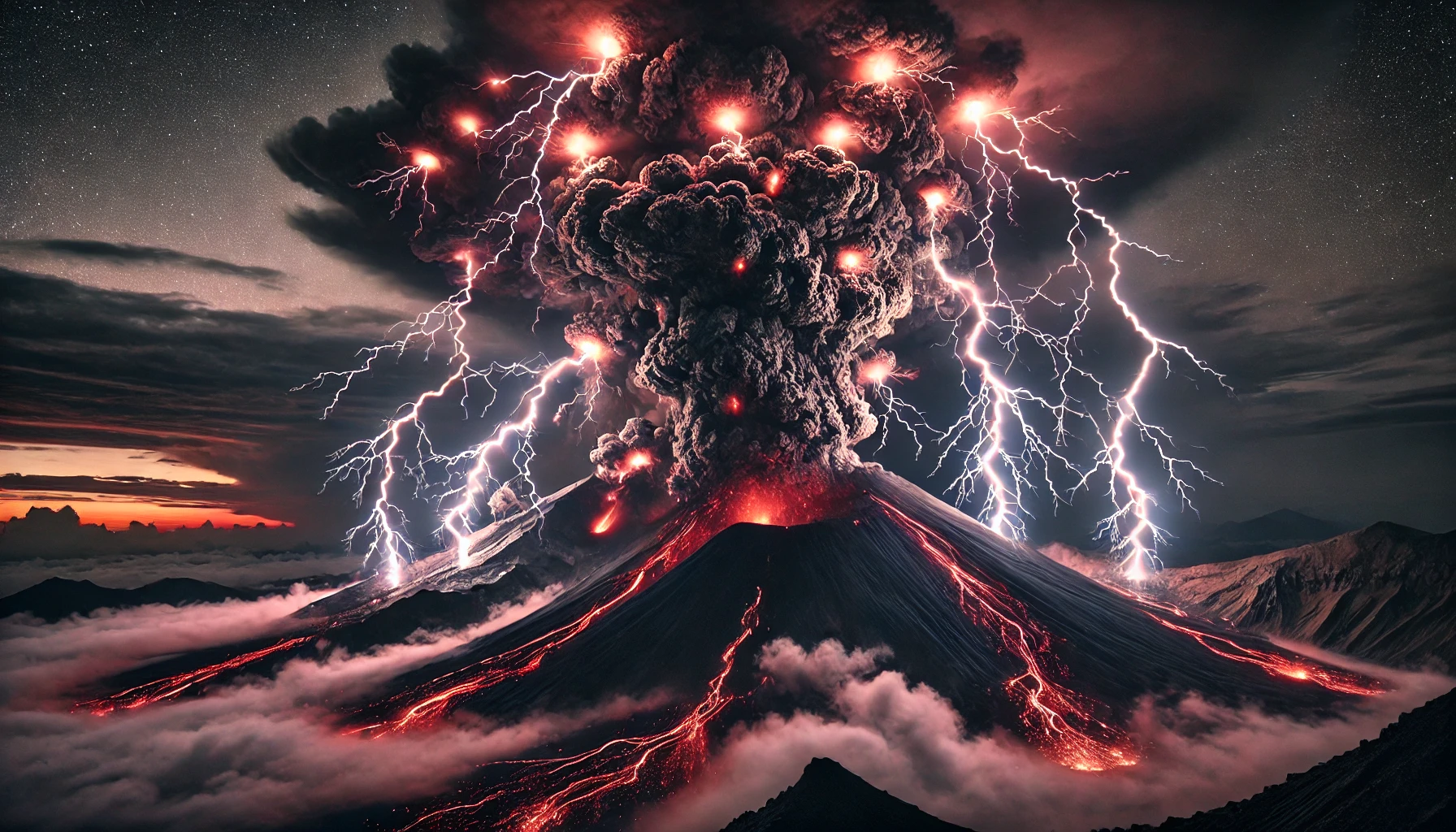Volcanic lightning, a rare and mesmerizing phenomenon, occurs when a volcano erupts, and bolts of lightning streak through the ash cloud. This spectacle, often called “dirty thunderstorm,” combines the power of both volcanic eruptions and electrical storms, creating a stunning natural display. Let’s explore the science behind volcanic lightning, how it forms, and where it can be observed.
What is Volcanic Lightning?
Volcanic lightning is an electrical discharge that happens during a volcanic eruption. Unlike typical thunderstorms, which form from atmospheric conditions, volcanic lightning is generated within the ash cloud of an erupting volcano. This phenomenon has been documented for centuries and remains a captivating subject for scientists and photographers alike.
How Does Volcanic Lightning Form?
- Ash Cloud and Friction
When a volcano erupts, it releases vast amounts of ash, rock fragments, and gases into the atmosphere. These particles collide with each other, creating friction and static electricity. As ash and rock fragments rub against each other, they accumulate electrical charges, much like rubbing a balloon on your hair generates static electricity. - Charge Separation
Within the ash cloud, different particles acquire different charges: some become positively charged while others carry a negative charge. This separation of charges creates an electric field within the cloud. - Electric Discharge
When the electric field becomes strong enough, it discharges as a bolt of lightning, illuminating the ash cloud. This discharge can occur within the cloud, between clouds, or even between the cloud and the ground.
Factors Influencing Volcanic Lightning
Several factors contribute to the occurrence and intensity of volcanic lightning, including:
- Size of Eruption: Larger eruptions release more ash and particles, increasing the likelihood of friction and charge buildup.
- Ash Composition: Ash with fine particles creates more surface area for friction, generating more static electricity.
- Moisture Levels: Some moisture in the ash cloud can intensify the formation of electrical charges, though volcanic lightning has been observed in both dry and moist ash clouds.
Famous Instances of Volcanic Lightning
- Mount Vesuvius, Italy – Historical records indicate volcanic lightning during the catastrophic eruption of Mount Vesuvius in 79 AD.
- Eyjafjallajökull, Iceland – The 2010 eruption in Iceland produced spectacular lightning displays, captured by photographers and witnessed worldwide.
- Sakurajima, Japan – This volcano, known for its frequent eruptions, often produces volcanic lightning, making it a popular location for studying this phenomenon.
Why Volcanic Lightning is So Rare
Volcanic lightning is not observed with every eruption. It requires specific conditions like high levels of ash, intense particle collisions, and sufficient charge separation. Thus, it occurs mainly in explosive eruptions that release vast clouds of ash and gas.
Conclusion
Volcanic lightning is one of nature’s most extraordinary and powerful displays. The convergence of volcanic eruptions and electrical storms showcases the incredible forces at work within our planet. Witnessing this phenomenon is a reminder of the raw, untamed energy of Earth. For those fascinated by the forces of nature, volcanic lightning is both awe-inspiring and humbling.


1 thought on “Volcanic Lightning: Nature’s Electrifying Display”